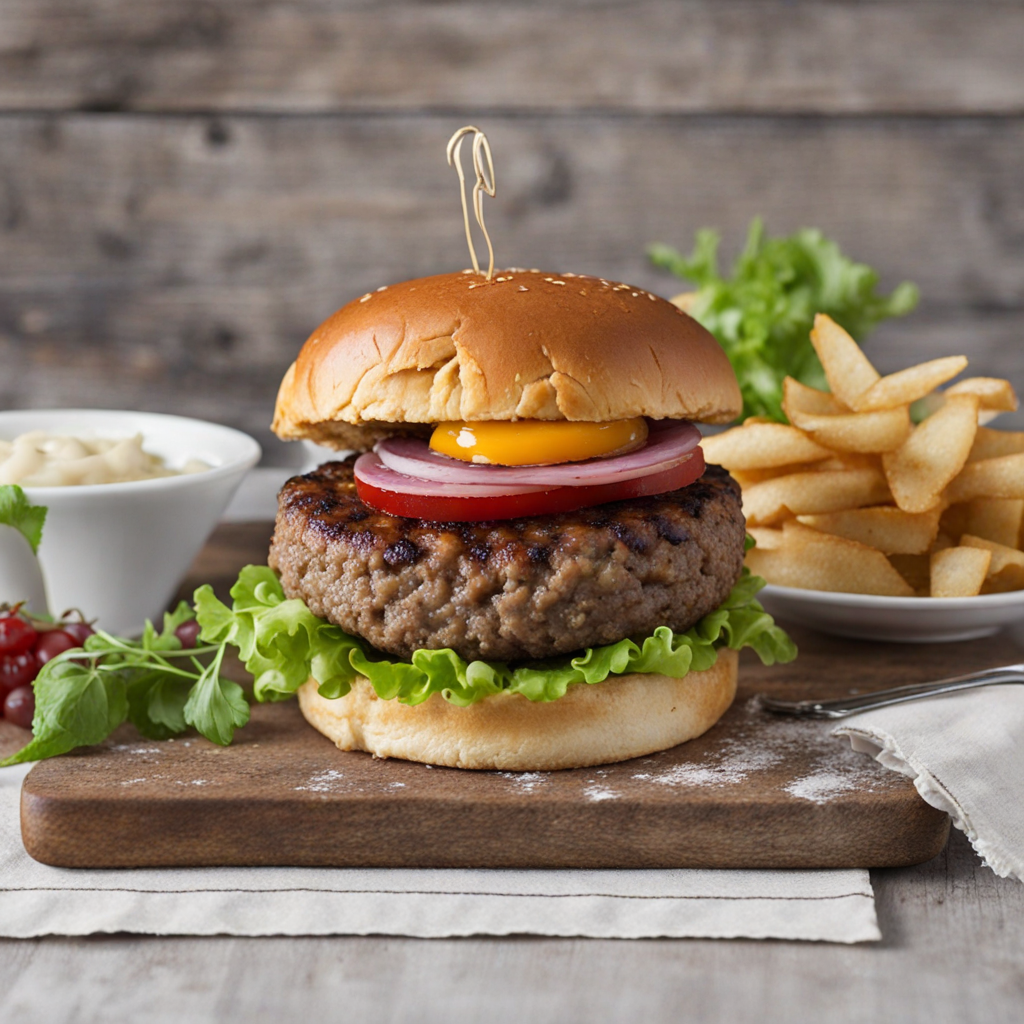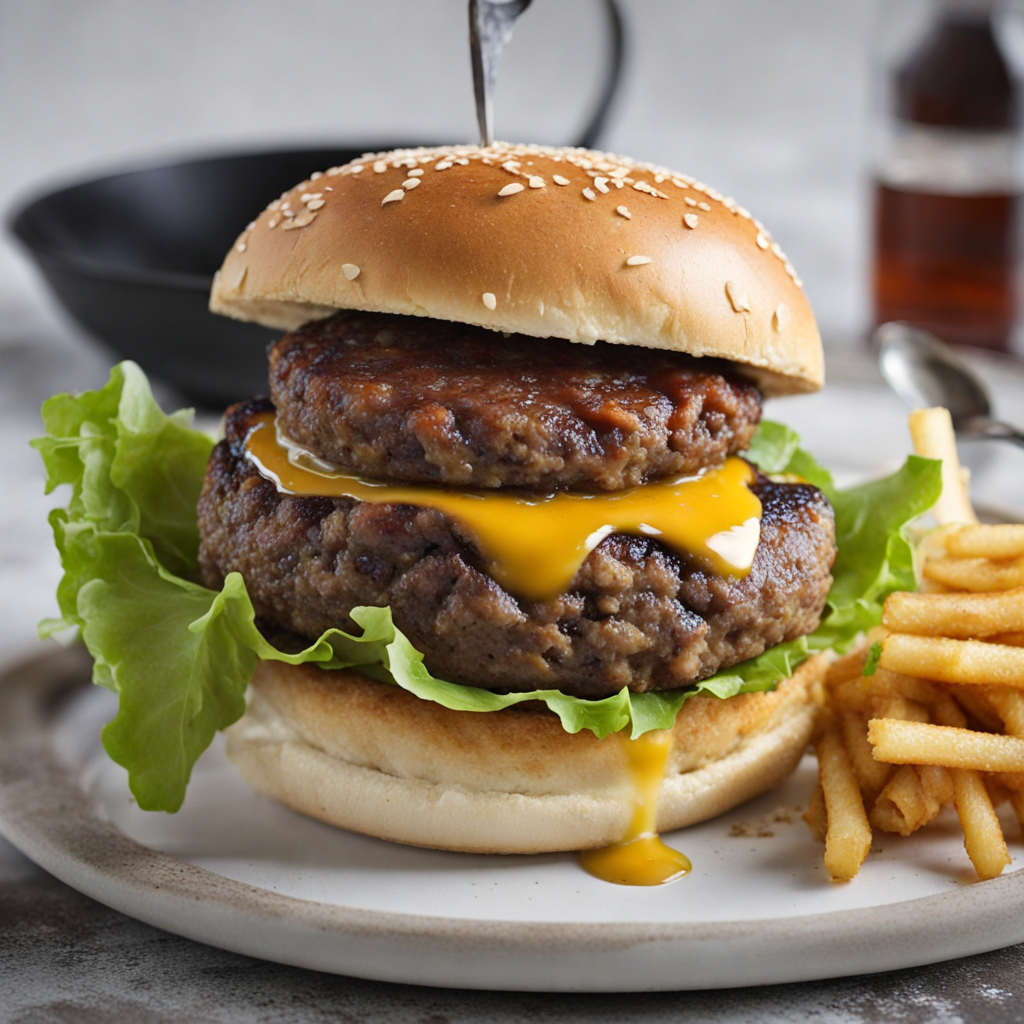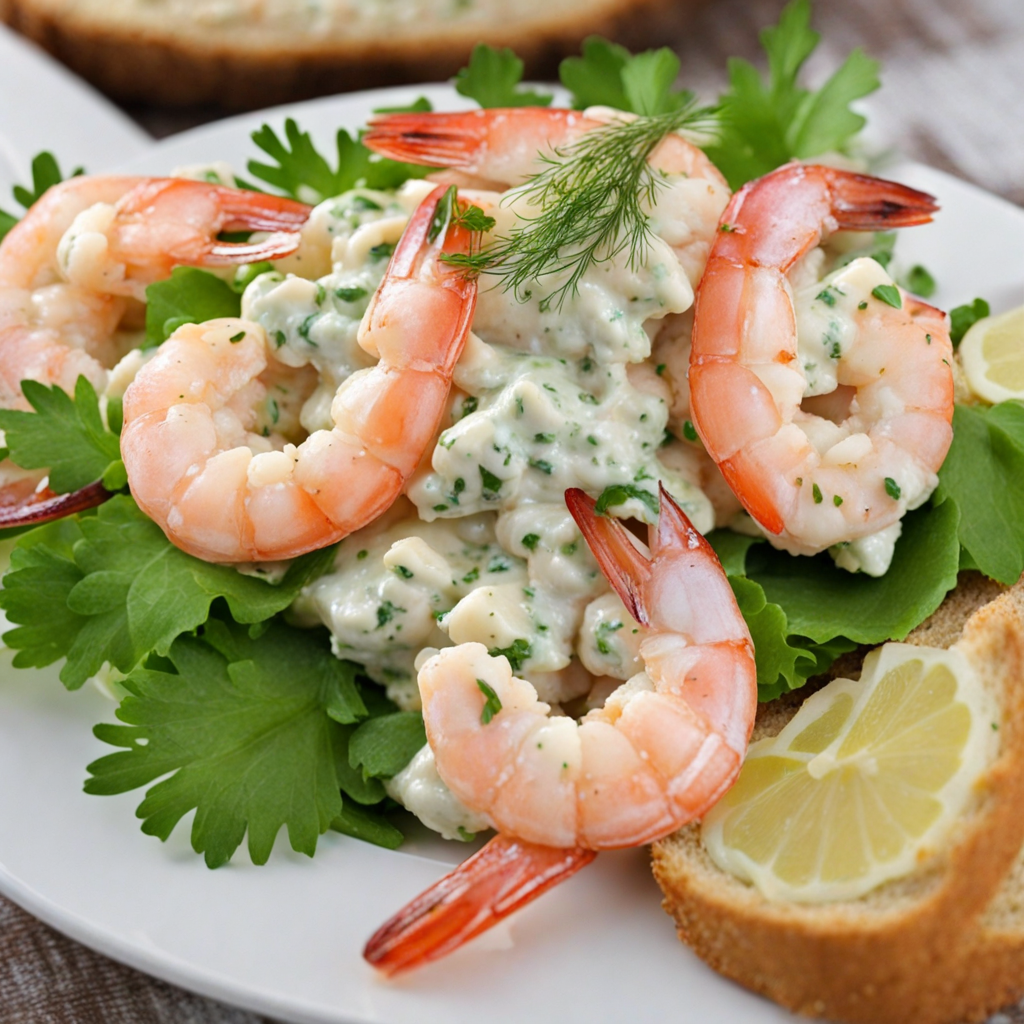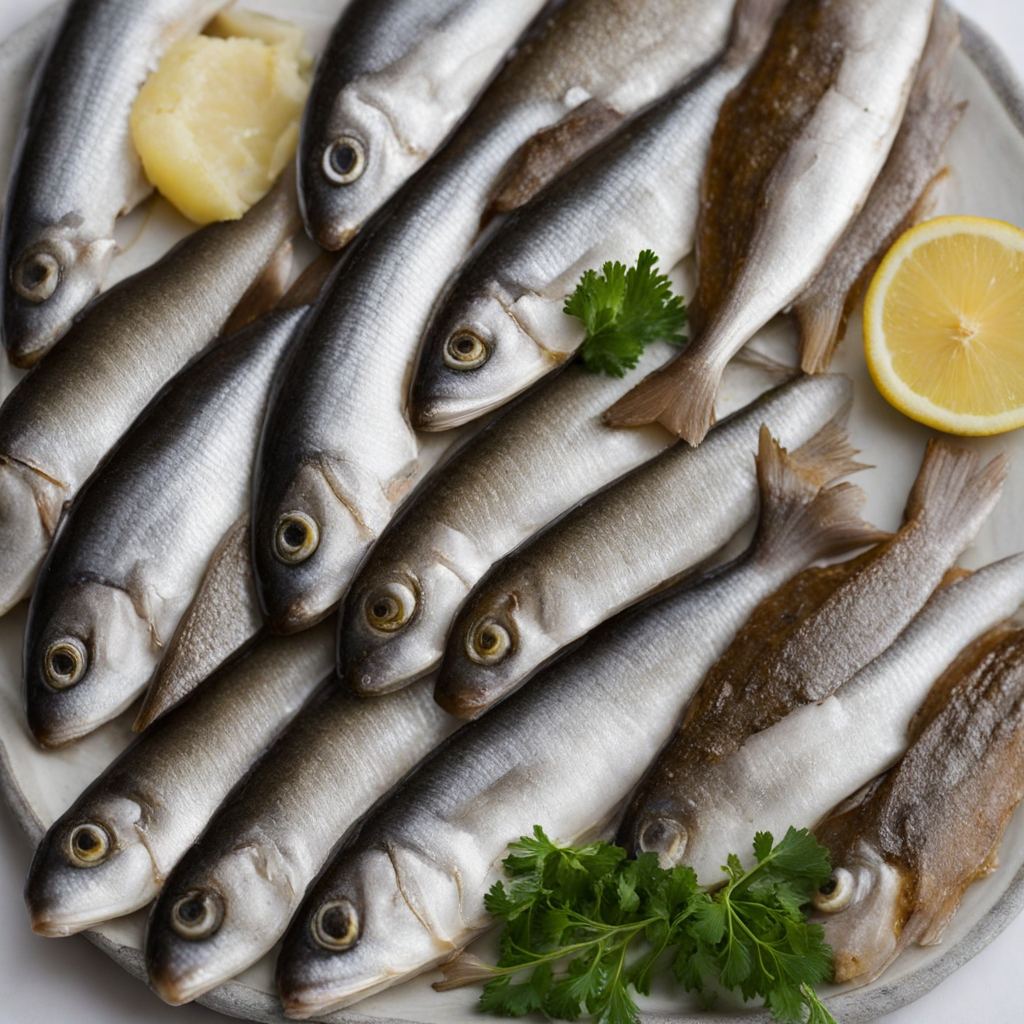Swedish Elk Burger
Swedish Elk Burger is a unique culinary delight that showcases the rich flavors of elk meat, a staple in Swedish cuisine. This gamey yet tender meat is often seasoned with traditional spices such as allspice and black pepper, which enhance its natural taste and bring out its robust character. The burger patty is typically grilled to perfection, allowing the juices to seal in while creating a beautiful char that adds depth to each bite. Served on a freshly baked bun, this burger is not just a meal but an experience that invites you to savor the essence of Sweden's wild landscapes. Accompanying the elk burger are a variety of toppings that elevate the dish further. Common choices include creamy lingonberry sauce, which offers a sweet and tart contrast, and crispy fried onions that provide a satisfying crunch. Freshly sliced cucumbers or pickled vegetables add a refreshing element, while a dollop of rich Swedish mustard introduces a tangy kick. Each component is thoughtfully selected to complement the elk meat, creating a harmonious balance of flavors that tantalizes the palate. The Swedish Elk Burger is often enjoyed with traditional sides, such as creamy mashed potatoes or a fresh salad, making it a heartwarming meal ideal for any occasion. Whether grilled at a barbecue or served in a cozy restaurant, this burger is a true testament to Sweden’s culinary heritage. It invites food lovers to explore new tastes while celebrating the natural ingredients that define this Scandinavian gem.
How It Became This Dish
The History of Älgburgare: A Swedish Culinary Delight In the vast and lush landscapes of Sweden, where dense forests meet shimmering lakes, the tradition of hunting and foraging has long been intertwined with the Swedish way of life. Among the many culinary treasures that have emerged from this rich heritage, älgburgare, or moose burgers, stands out as a symbol of both rustic simplicity and culinary innovation. This unique dish not only embodies Sweden's relationship with nature but also reflects the evolution of Swedish cuisine over time. #### Origins of Älgburgare The moose, or älg in Swedish, is not just a majestic creature roaming the northern forests; it is a vital part of Swedish culture and ecology. The hunting of moose has been an integral part of Swedish life for centuries, dating back to the time when the first settlers arrived in the region. Indigenous peoples, particularly the Sami, relied on moose as a primary source of food, clothing, and material for tools and shelter. The animal's significance was deeply rooted in spiritual beliefs, symbolizing strength and endurance. As the centuries progressed, the moose population burgeoned, especially in the 19th century, when conservation efforts and hunting regulations helped maintain sustainable numbers. This led to a burgeoning hunting culture, particularly in rural areas, where moose hunting became a communal activity celebrated with feasts and gatherings. It is within this context that the älgburgare began to take shape. While the concept of grinding meat into patties is not unique to Sweden, the transformation of moose meat into a burger reflects the culinary adaptation that has been characteristic of Swedish cuisine. The älgburgare likely emerged in the late 20th century as a way to modernize traditional moose recipes, making the meat more accessible to a wider audience and allowing for new interpretations of traditional flavors. #### Cultural Significance Älgburgare is more than just a meal; it is a cultural artifact that encapsulates the Swedish ethos of living in harmony with nature. The burger’s ingredients often reflect local practices, incorporating spices and herbs found in Swedish forests, such as lingonberries, thyme, and juniper. These additions not only enhance the flavor but also connect the dish to the land and its seasonal bounty. In Sweden, food is often a communal experience, and the älgburgare plays a prominent role in social gatherings. It is not uncommon to find this dish served at family barbecues, hunting gatherings, or traditional Midsummer celebrations. The burger serves as a bridge between generations, allowing older family members to share stories of their hunting experiences with younger ones, thereby passing down knowledge and traditions. Moreover, the älgburgare has gained recognition beyond Sweden’s borders, becoming an emblem of Swedish cuisine in international food festivals and events. The dish has been celebrated for its unique flavor profile and its representation of sustainable eating practices, as moose hunting is regulated and contributes to wildlife management. #### Development Over Time As Swedish society has evolved, so too has the älgburgare. The late 20th century saw an increased interest in gourmet food, and the älgburgare began to find its way into fine dining establishments. Chefs started experimenting with different preparations, incorporating traditional Swedish ingredients and modern culinary techniques. For instance, the use of local cheeses, artisanal breads, and seasonal vegetables has transformed the humble moose burger into a gourmet experience that appeals to a broader audience. In the 21st century, the movement towards sustainability and ethical eating has further elevated the älgburgare’s status. As consumers become more conscious of their food choices, the emphasis on local, wild-sourced ingredients has made älgburgare a favored option among eco-conscious diners. Restaurants proudly advertise the use of moose meat sourced from nearby forests, emphasizing the importance of supporting local hunters and preserving natural ecosystems. Additionally, the älgburgare has adapted to the changing dietary preferences of modern society. With the rise of plant-based diets, there have been efforts to create vegan or vegetarian versions of the dish, using mushrooms or legumes as substitutes while maintaining the essence of the original. This flexibility showcases the burger's adaptability and its enduring appeal across different culinary landscapes. #### The Future of Älgburgare Looking ahead, the älgburgare is poised to continue its journey of evolution. As Sweden faces the challenges of climate change and shifting culinary trends, there will be ongoing discussions about the best practices for sourcing and preparing moose meat. Innovations in food technology, such as lab-grown meats, may also influence the future of älgburgare, prompting chefs and home cooks alike to rethink traditional recipes. Furthermore, the emphasis on storytelling and connection to heritage will remain central to the älgburgare experience. As more people seek to understand the origins of their food, the narratives surrounding moose hunting and the traditions associated with älgburgare will likely be highlighted in culinary education and tourism. In conclusion, the älgburgare is a testament to the rich tapestry of Swedish culture, history, and cuisine. It encapsulates a deep respect for nature, a celebration of communal ties, and a commitment to sustainability. As it continues to evolve, the älgburgare will undoubtedly remain a cherished dish, linking generations of Swedes to their roots while embracing the future of food. Whether enjoyed at a family gathering or a gourmet restaurant, the älgburgare tells a story of resilience, adaptation, and the enduring bond between people and the land they inhabit.
You may like
Discover local flavors from Sweden







